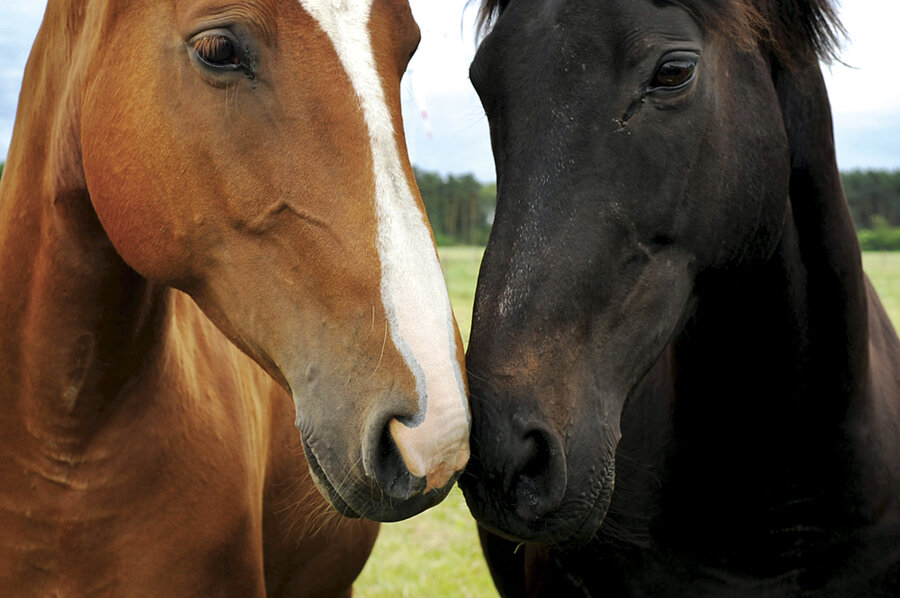An equine sense of place
Loading...
It is clear at a glance that the farm's most-lived-on patch of ground – a dark apron of well-trampled soil, enriched by the regular mulching and mixing of leaves and manure – is an equine-preferred spot, even if no horses happen to be there when you are.
Deeply shaded by the mature forest just over the pasture fence line, it lies a few yards east of the brushy seep where water pools after the rains before going on to feed the stream down in the hollow. All five of the draft horses we've worked and pastured over the years have adopted this place as the spot to stand and rest, perhaps to meditate in the quiet embrace of bird song. On a hot summer or early autumn day, they might linger for hours under the canopy of maples, stolidly gazing over the fence into the deep green depths of the forest, cooled by its breath.
Ben, a great black Percheron that Charlie brought to the farm in the late-1980s, led Doc and Jim to his bower when the Belgian team arrived in 1992. Before he and they died at advanced ages, our third Belgian, Buck, had been clued in as well. Buck stood alone on the horse-hallowed ground for a year or two until we brought Mary home to keep him company.
After that, we'd find the two of them standing head to head along the same horsehair-garlanded strands of wire at the pasture's edge.
These days we always know where to look for them when we don't see them out in the open, grazing.
I often pause on the fertile crescent of earth on my walks along the fence line checking for fallen limbs and trees, and wonder, "Why just here, year after year, one horse after another?" The view into the undulating woodland is lovely, but the place isn't any different or cooler, really, than any other along that back fence line. Not to mention some 40 acres of woodland open to the animals at the heart of the farm.
I have chalked it up to the fact that horses – and draft animals in particular – are creatures of solid habit, and once Ben had chosen this spot based on some equine wisdom or sense of well-being, the die was cast.
But I can't shake the feeling that there could be more to it than that, something Ben understood or felt about this particular spot that has passed from horse to horse in the way of folklore. With my human blinders I may never get it, but I love to pause and stand there awhile as I walk the fence, and wonder.






